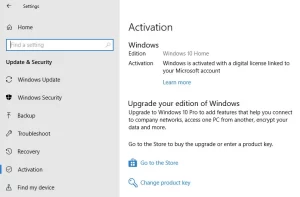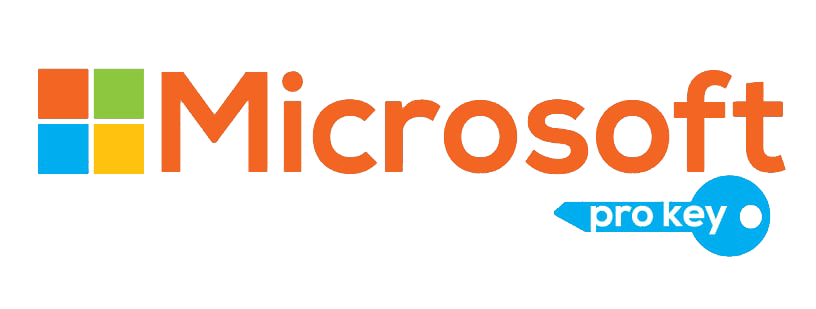If you buy a new PC with Windows 10 Home installed, be prepared to be disappointed. The down-market version (maybe it’s better to refer to it as Windows to Cheapskates) isn’t equipped with the features you need to do real work Remote Desktop server access, BitLocker disk encryption, Group Policy support and control of when updates are installed, to name a few.
It’s possible to pay $99 to upgrade; however, think about a less costly alternative before reaching your wallet.
Are you holding keys for Windows 7 Pro, Windows 7 Ultimate and Windows 8/8.1 Pro in your home? These keys can be used to make it possible to upgrade from Windows 10 Home to Windows 10 Pro, which could save you money on the upgrade. You can use a product key from any of these earlier Windows versions to carry out an unclean install or make the upgrade Pro.


It’s worth digging through your storeroom, garage or your email archives to see if you can find one of those keys. You might have a key to one of the pricey updates for Windows 8 Pro that Microsoft made available in the early months after the product’s disastrous debut in the year 2012.
Perhaps you own the shrink-wrapped version that’s Windows 7 Professional or Ultimate or Ultimate, and the license included with the key for the product is no longer being used.
Once the setup was finished, I logged in and verified the activation status (Settings > Update and Security > Activation). Microsoft’s servers correctly activated the system since they recognized the hardware and applied it to authenticate the license digitally.
CLEAN REINSTALL AND Edition UPGRADE
The only issue in this particular set of scenarios is when you have a PC that includes Digital licenses that include both Windows 10 Home and Windows 10 Pro. It is possible to accidentally back up Windows 10 Home in this scenario.
Recently, I made use of the recovery image to reinstall Windows 10 on a Surface Pro PC that had initially come in Windows 10 Home and had been upgraded to Windows 10 Pro. Unexpectedly, using the recovery image resulted in me the option of installing Windows 10 Home.
If you’re experiencing this, do not bother looking for the product key you utilized to update. Instead, you can use Microsoft’s generic product key to make the upgrade happen.
Click on Settings, Update and Security > Activation, and click “Change Product Key. Then, input the standard Windows 10 Pro product key:
VK7JG-NPHTM-C97JM-9MPGT-3V66T
Follow the instructions for upgrading from Home to Pro. Since your device is already equipped with a digital license to the Pro edition, It will be activated automatically.
The generic product key doesn’t work. If your device doesn’t have a Pro license, you’ll receive an activation error. You’ll have to provide a valid product key or purchase an upgrade.
The best thing about it is that you’ll only need the previous product key one time. When you’ve completed the upgrade from Windows 10 Home, the Windows 10 Pro Digital License will be linked to the hardware you upgraded, allowing users to install the latest version of Windows on the hardware without needing an additional product key.
This was the case during the initial Windows 10 upgrade program, and following some tests and reports from independent testers worldwide, I can confirm that it is still working in 2021, which is more than five years after the event.
Microsoft initially made this feature accessible with Windows 10 version 1511. Since then, they’ve simplified the process significantly.
I’ve tried out activation and upgrade scenarios on a range of hardware to determine what happens. Here’s what I know.
UPGRADING A NEW PC FROM HOME TO PRO
You Bought a brand new PC with Windows 10 Home installed by the OEM. Certain vendors provide an upgrade option in conjunction with the purchase, but many PCs sold through the retail channel are already loaded with the Home edition.
It could be the scenario if you took advantage of the no-cost Windows 10 upgrade offer on your PC that runs a Home version or Windows 7 or Windows 8. x.
In any case, the upgrade will take only some minutes. Start by going to Settings > Update and Security > Activation. Here, you’ll be able to see a display that looks like this:


If you do not have a Pro product key and want to purchase one, go to The Store and purchase the upgrade for $100. Easy.
However, suppose you have an official product key that works with Windows 10 Pro, Windows 7 Professional or Ultimate and Windows 8/8.1 Pro. In that case, you can choose a lower-cost alternative: Click on the change Product Key link and enter the 25-character code here.
After entering the product key, follow the steps to perform the upgrade.
There will be a series of progress screens. Your system will reboot. You’ll receive a “Success” message when the upgrade is completed. Go back to the Activation screen to confirm that you’re operating Windows 10 Pro.
CLEAN Reinstall
If you’ve succeeded in completing an upgrade from Home-to-Pro and you’ve completed it, you’re able to file the key to the product. The upgrade now has an online license linked to your particular hardware. If you install a new version of Windows, Microsoft’s activation servers can recognize the hardware and allow you to activate Windows 10 automatically.
I’ve tried this setup several times with devices that came in Windows Home and were upgraded to Windows 10 Pro. When the upgrade was complete, I booted up a USB flash drive that could boot. USB flash drive that contained Windows 10 setup files to install a new clean copy of Windows 10 Pro, skipping the option to enter a key for the product during setup as illustrated below. Select Windows 10 Pro as the edition you want to install if you are prompted.



